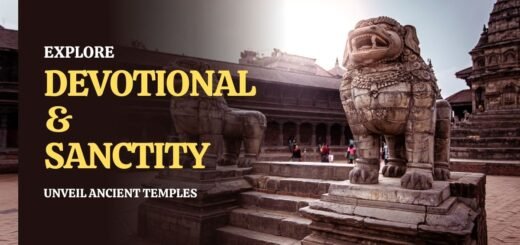Tungnath Temple History And Significance
Know the details about Tungnath Temple History And Significance, Tungnath Temple history and importance, and Tungnath Temple location and route map guide
Tungnath is not only the highest of the five Panch Kedar temples that are located in the Rudraprayag district of the Indian state of Uttarakhand, but it is also one of the tallest Shiva temples in the whole globe. It is located in India. Additionally, Tungnath is one of the tallest temples that may be found anywhere in the globe. The mountain range known as Tungnath, whose name literally translates to “Lord of the Peaks,” was the primary factor in the formation of the river basins that are today occupied by the Mandakini and the Alaknanda rivers. It may be located at an altitude of 3,690 meters, which is just a hair lower than the highest point of Chandrashila. It is claimed to have a colorful past that is intricately connected to the courageous Pandavas from the Mahabharata epic. See below to get the details about Tungnath Temple History And Significance
Click here to get Shiva Ashtakam Shlok’s Lyrics
Click here to get Varanasi Kashi Vishwanath Temple Rudrabhishek Timings Online Booking Procedure
Tungnath Temple History And Significance
It is stated that once the Pandavas had killed off their kin in the battle of Kurukshetra, they set off on their journey to discover Lord Shiva, which is the mythology that is associated with the Tungnath Temple. The Tungnath Temple is located in Uttarakhand, India. The Tungnath Temple is a significant location in the narrative of this myth.
However, since Lord Shiva was disturbed by all of the deaths, he made the decision to steer clear of them, no matter what the cost. As a direct result of making this choice, he was forced to morph into a bull before disappearing into the ground, taking with him pieces of his body that he had scattered around the landscape.
Click here to get the Tungnath Temple location route map guide
Tungnath Temple History And Significance
Kedarnath was the location where his hump, Tungnath was the location where his bahu appeared, Rudranath was the location where his head appeared, Madhyamaheshwar was the location where his stomach and navels appeared, and Kalpeshwar was the location where his jata appeared.
The Pandavas established a temple at this site in order to demonstrate their commitment to the worship of Lord Shiva and earn his approval. The name of the temple derives from the words “Tung,” which means “weapons,” and “Nath,” which alludes to Lord Shiva. These two words came together to form the name of the temple.
Tungnath Temple History And Significance
The fact that the Tungnath Temple has a local Brahmin priest provides it a big edge over the other Panch Kedar temples, all of which have priests that hail from southern India. This gives the Tungnath Temple a substantial advantage over the other Panch Kedar temples. In addition, Maithani Brahmins are the ones who fill the positions of priest at this particular temple.
Many devotees are under the notion that Adi Shankaracharya was the one who initiated this practice for the very first time. In addition to that, the temple is closed down during the wintertime since it is too cold to be inside.
After that point, the iconographic image of the god was altered to show Mukkumath instead of the previous deity. Here at Tungnath, which is perched atop the mountain that divides the Alaknanda and the Mandakini rivers, the waters of the two rivers are diverted in distinct directions.
Additionally, the Chandrashila Peak may be found around two kilometers to the west of the temple. Since the site of the temple is inaccessible during the winter months owing to the terrible weather that happens during that time of year, the bulk of the pilgrims that visit the temple do so during the summer months.

